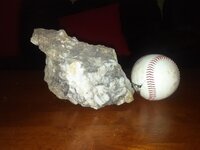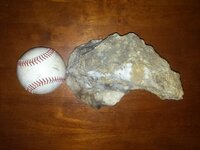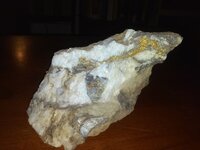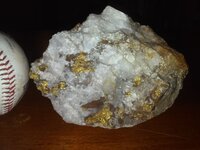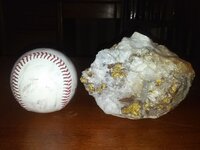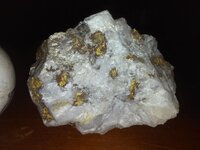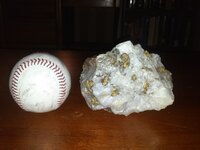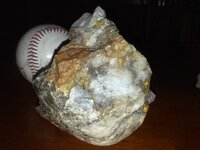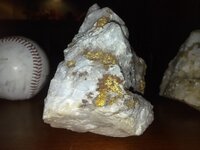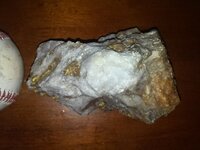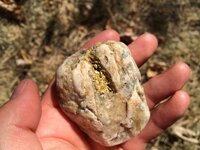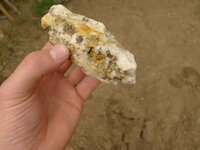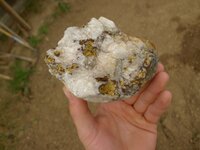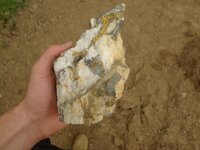sierra_ronin
Jr. Member
Upvote
0
RIGHTEOUS species for sure. Silence is indeed golden so tell NO ONE where-John
If it proves to go all the way through the rock, you might want to consider finding someone that can etch the rock away with acid. It looks to me like that would be a beautiful piece when and if you etch the rock away.
If it proves to go all the way through the rock, you might want to consider finding someone that can etch the rock away with acid. It looks to me like that would be a beautiful piece when and if you etch the rock away.
As I said in my forum post from Monday "My First Quartz Gold Specimen" I would be posting photos of my specimens over the next few weeks. Here I have some images of the second specimen I found in the heart of the mother lode near a historically productive area.
View attachment 1116909
View attachment 1116910
View attachment 1116911
View attachment 1116912
Or you could ruin the specimen. If the perceived interior stringers are nonexistent or unsubstantial (wiry) you may end up with several pieces of pretty leaf gold with less value than a natural specimen. In this case I choose nature over science. With a piece of ore, say from the 16 to 1 mine in Alleghany (sp), I might choose differently if the quartz was cracked throughout but held together with gold stringers.
Very Nice ! How long ago did you find that ?
Those large gold quartz specimens are nature's treasure forged by the hand of God.....I say keep or sell em' intact. Beautiful piece and well done.

If you could; I would dig the crap out of that area.

The problem is this... You can't use any specific gravity test on your nugget because it's not pure quartz and gold. You can easily see the other mineralization throughout the quartz. The specific gravity test is weighing all of the metals inside and outside, not just the gold and quartz so this speci unfortunately will not be accurate. But there is another way to look at it and that is that even though there may be very little gold inside this specimen, most people don't know that the specimen has to be pure quartz and gold to get an accurate reading. I would guess that 75% of the weight after the test will actually be iron and the other metals inside this specimen, so if you do the test and it will come out really high in metal content that many will think is gold, an unsuspecting buyer wanting to pay you on gold content will pay a lot more for it then its actual weight if they have never seen the truth about this calculation. The only way to know for sure would be to crush it and then weigh all of the minerals separately. I have a mineralized nugget that I am going to crush for a specific gravity video one of these days to demonstrate exactly what I am saying for everyone and I will try to get it done this Spring
